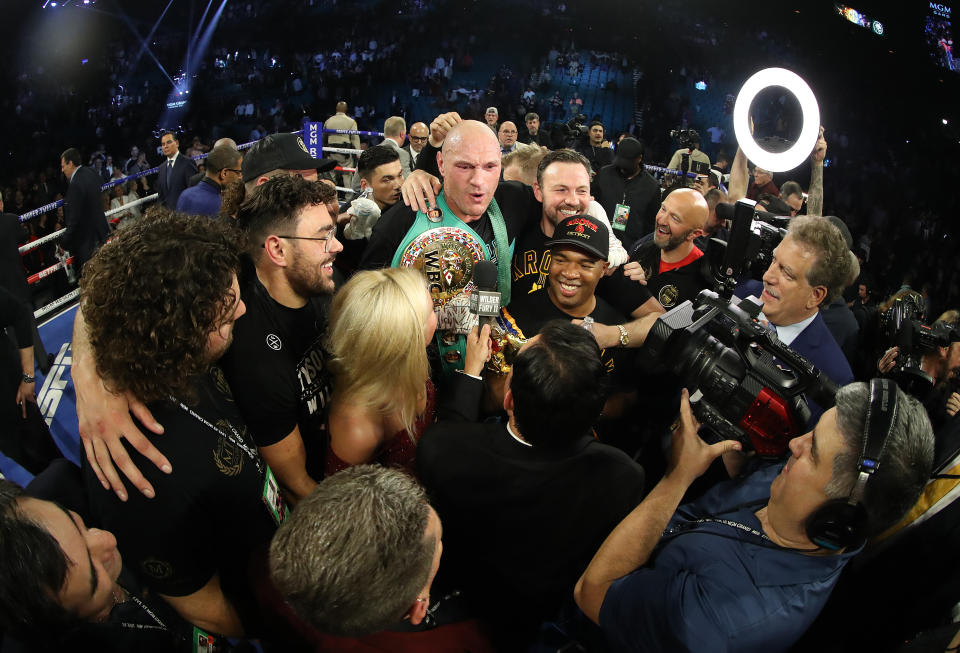Extraordinarily high theft of PPV signal leads to disappointing sales figure for Wilder-Fury rematch

The heavyweight championship fight between Tyson Fury and Deontay Wilder on Feb. 22 had unprecedented promotion, as ESPN and Fox teamed to give it visibility that few fights in modern boxing history have gotten.
It built interest in the fight, but it did not cause fans to reach into their pockets and buy it.
Multiple sources confirmed to Yahoo Sports that while digital sales were well above expectations, cable and satellite sales figures were well lower than anticipated, which resulted in a sales figure of between 800,000 and 850,000 pay-per-views. That is 25 percent lower than the reported break-even mark of 1.2 million.
The main culprit is theft of the signal. According to Wayne Lonstein of VFT Solutions, which tracks signal piracy, there were between 10 and 20 million live views of the fight on the major social media platforms such as Twitter and Facebook, and there were nearly 10 million more that were viewed as video on demand. Many of those latter views were only slightly delayed.
Many bars and restaurants also illegally accessed the figures. Those thefts not only cost the promoters and networks distributing the event, but it also takes money directly out of the fighters’ pockets. Wilder and Fury were each guaranteed $5 million for the rematch, which Fury won by seventh-round TKO. They also shared in the pay-per-view revenues, which were dramatically lower because of the proliferation of piracy.
Lonstein said a sporting event such as boxing matches are ripe for theft because they can end quickly and even if rights holders manage to get the illegal streams taken down within 10 or 15 minutes, that’s several rounds of a fight. In the case of the Fury-Wilder rematch, there was only 19:39 minutes of fight action. If you add the minute between rounds, that figure increased to 25:39 of total airtime.
The UFC has robust efforts to combat signal theft, but boxing promoters aren’t as aggressive protecting it and the theft rate is higher. One of the things that Lonstein is trying to do is to offer illegal streamers the ability to purchase the bout.
“Millions of people are self-identifying as, ‘Hey, we want to see this fight,’” he told Yahoo Sports. “When you get into the millions, there is opportunity here [to sell them the signal legally]. The social demand and social consumption is so great that we are and have been working with a lot of content owners to actually move people. We can insert live messages into the chat stream and we get thousands of clicks to where we want to send them. It’s a nascent technology ... but there is a lot of opportunity there.”
The first Wilder-Fury bout, which finished in a split draw on Dec. 1, 2018, at Staples Center in Los Angeles, sold just over 300,000 pay-per-views. It is a testament to the work that ESPN and Fox did in building interest in the bout that the PPV figures rose by more than 250 percent.
It helped to increase awareness of the bout and interest in it, but it did not result in the kind of figures that were speculated before the bout because of the signal theft.
It’s a problem promoters are going to have to find a way to combat, or it could be the effective end of pay-per-view.
“You’ve heard people for years saying boxing is dead, but if you really look at this and do an analysis, people are hungry for the content,” Lonstein said. “The product is becoming compelling and there is interest in it, no question. There is an astounding opportunity [to convert some of those signal thieves into buyers], but it’s a major issue and it’s just getting bigger.”
Lonstein also said there has been a trend for the theft of the audio signal only, and people are willing to listen to the feed to follow along on their phones without seeing it.

More from Yahoo Sports:

